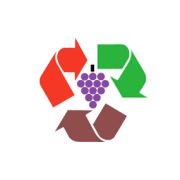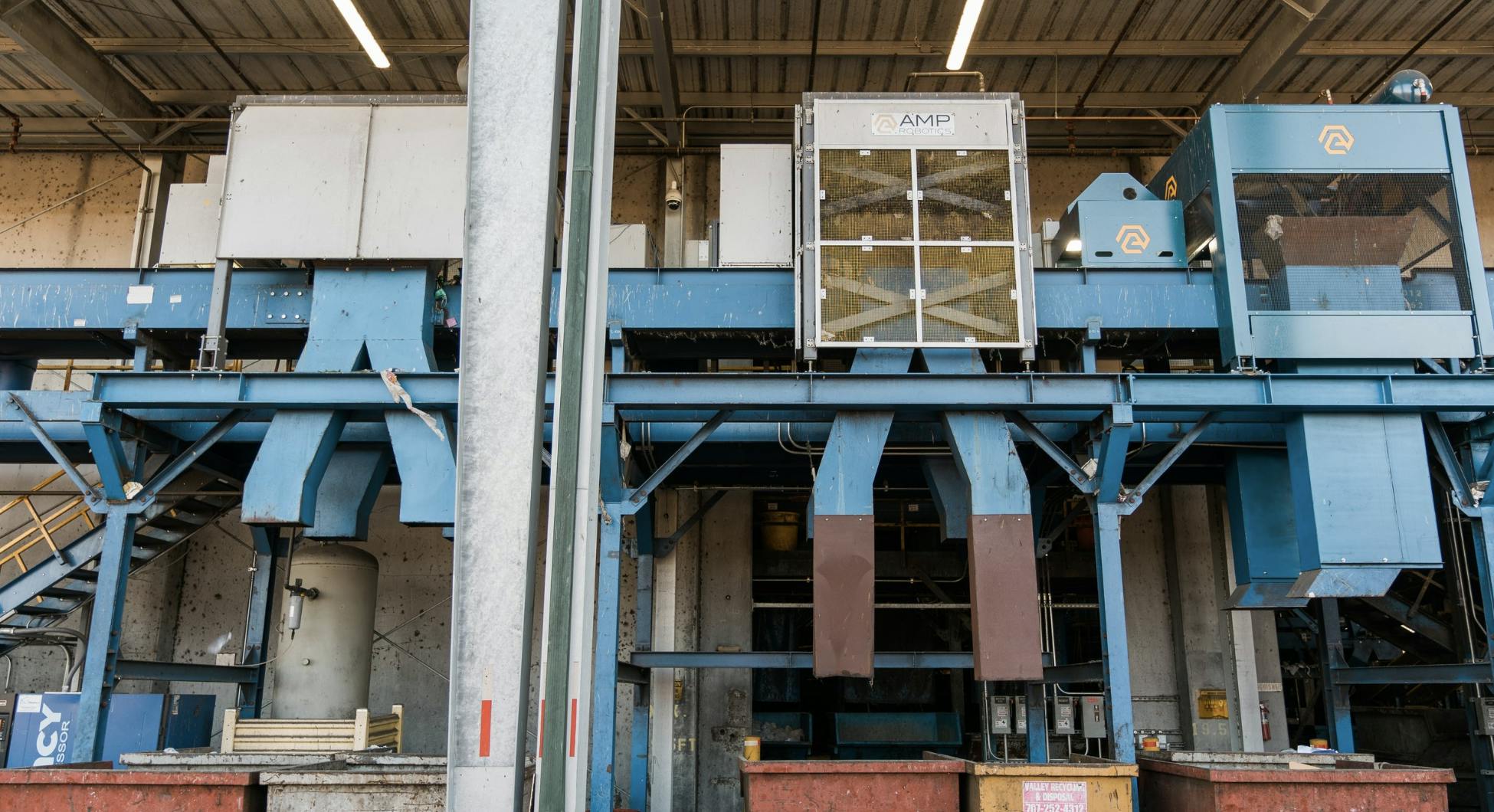Loading...

Napa Recycling & Waste ServicesNapa RecyclingNapaCalifornia
Napa Recycling & Waste Services
MRF now diverting polypropylene, along with PET, HDPE, and cartons, thanks to technology investments
Napa Recycling & Waste Services provides the City of Napa, California, and the surrounding area with efficient, economical, and sustainable recycling and waste management services, with roots in the community dating back more than a century. Napa Recycling works with the City of Napa and Napa County to increase recycling rates to support and advance the region’s progress toward zero waste.
Challenges:
Staff absences and turnover
Napa Recycling had regularly dealt with rough patches when it came to staffing, but COVID-19 drove an uptick in worker absences, with employees out sick, tending to ill family members, or trying to manage the ripple effects, like shuttered schools and daycare, caused by the pandemic’s various waves. Combined with planned vacations and time off, and absences due to injury, COVID disrupted the staffing Napa depended on to keep its container lines up and running. This was on top of the already challenging job of manual sortation at a material recovery facility (MRF). There’s high turnover, and those who are good at the job don’t stay in it—it’s often a stepping stone to other higher-paying opportunities, like equipment operator or route driver.
Limited recovery, changing material stream
The MRF also struggled with missed recovery opportunities. Napa trained its manual sorters to identify the most common types of plastic, such as water and soda bottles made from PET and milk jugs and laundry detergent containers made from HDPE. But the MRF was also taking in newer, less common, and harder-to-identify types of PET and HDPE as part of the changing material stream. Anything that its employees hadn’t been trained to pick, even if it was coming into the facility at a high volume and had an end market, was likely destined for landfill.
Even though it’s not an accepted material, Napa sees about six times the plastic film contamination and many more single-use plastics compared with a decade ago. Since the introduction of California’s SB 1383 mandating organics recycling, the MRF is also receiving a significant uptick in packaging containing liquids. This is along with an explosion of cardboard and steep drop-off in newsprint. Much of the technology that Napa, along with the broader industry, employs was designed for a different material stream than the MRF takes in today.
Solution:
Robots show swift results
When the team at Napa decided to install an AMP Cortex™ system to pick PET and HDPE on a residue line in 2019, Manager Trevor Manasse didn’t make too much of being an early mover. “It’s how we are. We’re constantly trying new things, and we’re eager to experiment in every aspect of our business.” And it didn’t hurt that the robot established confidence quickly. “The robot met our expectations almost immediately and showed constant improvement,” Manasse added.
Grant funding makes new technology accessible
Napa’s second robot, focused on picking cartons, then PET and HDPE, followed in early 2020, made possible through a grant from the Carton Council, a nonprofit organization of carton manufacturers that works to support recycling technology and local collection programs. Before it acquired the robotic system, Napa had been a long-time champion of carton recycling in the Bay Area. In 2019, it began picking up bales of sorted cartons from other MRFs to consolidate into full truckloads. “Cartons have a consistent market, but we don’t have as much volume of cartons as other materials,” said Tim Dewey-Mattia, recycling and public education manager. By consolidating cartons from other MRFs, it’s able to get a full truckload in less time—freeing up valuable storage space at the MRFs as well as helping increase carton recycling in the region.
In late 2021, The Recycling Partnership’s Polypropylene Coalition awarded Napa one of four MRF grants to fund the purchase of equipment or process improvements to harvest and market polypropylene (PP). With the grant funding, Napa purchased a third AMP robot, which was installed in early 2022.
“Grant funding is important because it shows a real commitment from the industry to partnering with the community on recycling programs. It’s particularly helpful in jump-starting a program for materials that might not have traditionally been sorted as their own stream because the funding covers the cost of some of the infrastructure and start-up—removing a significant barrier to entry for a MRF.”
In each case, AMP produced, delivered, and installed the systems quickly. The lack of downtime during installation was key; halting the operation would have required the MRF to stockpile material for processing or pay to transfer it to another facility. Each scenario would likely have caused Napa to pay overtime to catch up, leading to higher labor costs.
Results:
Higher capture of new and existing commodities
With robots, Napa is increasing recovery and extracting more value from the material stream. With the addition of its second and third robots, in particular, the MRF is able to capture new materials like cartons and PP, and more PET and HDPE, that previously would have been bound for landfill.
According to a report from The Recycling Partnership, data suggests polypropylene could have a higher volume in the recycling stream than both natural and colored HDPE. And there’s increasing demand for the material, which is used in an array of food and non-food packaging. The grant funding Napa received to purchase a PP-picking robot helps address this need on the supply side for recycled polypropylene and allows the MRF to benefit from increasing end market pricing, while supporting a more circular economy for plastics. Moreover, Napa’s acceptance and sortation of polypropylene is also helping to improve the recyclability status of the material in light of SB 343, which regulates recycling claims on products and packaging in California. Polypropylene recovery also helps fulfill Napa’s contract with the community, says Manasse. “We accept polypropylene in our bins, so we should be recovering it—both from an environmental and an economic standpoint.”
In addition to recovering more material, the technology has freed up employees to do more specialized work on the sorting line. Robots allowed Napa to shift the focus of its human sorters to easy-to-identify contamination, while automating “picking for value.” With the addition of robots, Napa completely changed its approach to recovery: humans transitioned from pulling items of value to instead removing items of no value, or contamination. Robots became the tool Napa trusted to maximize value from the material stream.
Operational stability and easy adjustability
Another benefit of AMP’s AI and robotics technology is consistency and flexibility. The robots are ever-present, and amid COVID-related staffing turbulence, Napa could count on a stable sorting workforce with automation. Manasse estimates that in early 2022, up to 40% of Napa’s staff was absent between vacations, illness, and injury, but the facility was able to operate normally thanks to the robots and other equipment. Moreover, the dependability of the technology means the team has bandwidth to pursue other projects at the MRF that running too lean would not afford.
The systems can be adjusted to reflect material stream changes, commodity prices, and more. Robots can work in areas and on materials where volumes don’t warrant a human because they can multitask and target a variety of materials in lieu of just one or two.
Looking ahead:
Better data to drive operational optimization
Napa has also been using AMP Clarity™, a web-based data portal for material characterization, on a trial basis. The solution is designed to help customers better understand the state of their facility at any point in time, track variations in materials or robot performance, and evaluate new opportunities throughout their operation. Material composition alerts are one type of functionality Clarity offers; these alerts notify users if composition counts are higher or lower than expected, or if there are contaminants in the stream, like metals on a PET line. Others use it to ensure they are seeing expected quantities of material on each line.
In Napa’s case, it allows Manasse the ability to see, for example, 200 counts of PET coming down the line, and make the decision to move another sorter there to help capture the heavier volume of material. When he looks at averages over the course of a month, he can determine whether it makes sense to rotate a sorter to a different line, or program another robot to pick some of the material not being captured by the first one. It’s been a helpful tool to judge operational efficiencies and how to optimize volume spikes and staffing to ensure Napa is capturing the most material possible.
Clarity also offers a view into details such as target vs non-target material breakdown as well as overall material counts for the last hour or since midnight. Clarity users start to establish trends, or baselines, from this view, causing outliers to stand out. Future planning, facility enhancements, higher material capture rates, and improved purity in recovered commodities all start with a solid understanding of the composition thresholds in a facility.
Opportunities for expansion of automation
Napa recently invested in optical sorting technology for its fiber lines and sees an opportunity to install a robot for quality control after the optical. Optical sorters and robots are complementary technologies; the former handles high-volume materials well, but robots are better suited to more specific material targeting. AMP’s systems often deliver purity upwards of 98% and require no human intervention afterward. Plus, because robots can target multiple material types simultaneously, balancing their efforts between them, they provide MRFs with more material cuts. Their flexibility and precision was a key driver of Napa’s decision to install a third robot to target a plastic type with an emerging end market like polypropylene.
Napa is also exploring the application of robots for presorting, which is still a primarily manually staffed line. Thanks to the lower labor burden, increased material recovery, and operational consistency that robots have brought to Napa, Manasse would turn first to AMP for any future quality control needs on his lines.
In addition to their operational benefits, Dewey-Mattia also considers robots an effective tool for educating the public about recycling. Napa regularly hosts tours and provides information to the community about how it's sorting the material people place in their curbside bins. Robots aid in the storytelling, and make the recycling process that much more compelling. “We’re in the outreach and education business. Robots help us efficiently divert more material. We, and the community we serve, want to see things done safely, more sustainably, and with less of a carbon footprint—and with this technology, we are,” Dewey-Mattia concluded.
